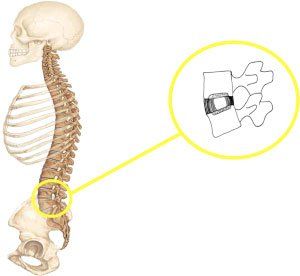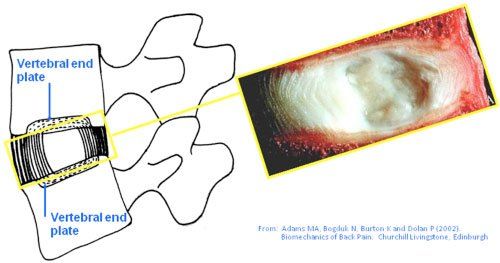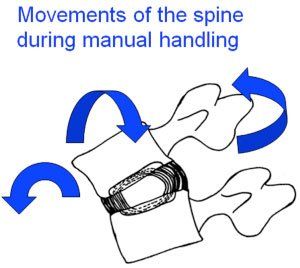We love Occupational Health - Call and say hello - Mon - Fri 8.30am - 4.30pm
We love Occupational Health - Call and say hello - Mon - Fri 9am - 5pm
Blog Layout
Effective manual handling training
There is a wide choice of manual handling training courses that are available to choose from. When trying to decide which course to select please read our blog entitled Manual Handling Training Myths & Top Tips as this will help you to identify the essential ingredients of effective manual handling training courses.
Top manual handling training tip number 13 includes anatomy and physiology as part of what core content should cover. Most manual handling training courses focus on the slipped disc as being the source of the disability that people suffer from through poor manual handling techniques. This ignores a fundamental and far more common cause of pain and loss of function that is the precursor to many causes of pain in the back including, but not limited to, the slipped disc.
Research demonstrates that in a large number of cases of mechanical low back pain (low back pain not caused by disease) the primary cause of loss of function is the fracture of a structure called the vertebral endplate.
Top manual handling training tip number 13 includes anatomy and physiology as part of what core content should cover. Most manual handling training courses focus on the slipped disc as being the source of the disability that people suffer from through poor manual handling techniques. This ignores a fundamental and far more common cause of pain and loss of function that is the precursor to many causes of pain in the back including, but not limited to, the slipped disc.
Research demonstrates that in a large number of cases of mechanical low back pain (low back pain not caused by disease) the primary cause of loss of function is the fracture of a structure called the vertebral endplate.
If you look at Diagrams 1 and 2, you can see how the vertebral end plates form a boundary between the adjacent vertebrae and intervening disc.
The various movements of the spine during manual handling (see Diagram 3) result in compression forces on the vertebral end plates. The compression forces (represented by the black arrows in Diagram 4) can lead to a fracture of an end plate, as shown at the right of Diagram 4.
Consequences of a broken end plate
The broken end plate in diagram 4 is quite obvious to the human eye. The problem is that breaks can occur in the end plates that are much smaller than this. In fact they cannot be detected on most imaging techniques (X rays and scans). The end plate fractures however, even though they cannot be easily detected, cause the disc to be unable to resist load resulting in pain and dysfunction. In time however, the fracture, if not overloaded, heals and the spine gradually restores its ability to carry load without pain.
Initially an end plate fracture is not painful, with the individual saying that they heard a pop in their back at the start of their episode of back trouble – but felt no pain at the time. If you look at Diagram 4 and compare it to Diagram 2 you can see how the disc (white tissue) has lost its height. This happens because the end plate fracture has caused the disc to depressurise, which leads to many further problems including fractures of the vertebral body, osteoarthrosis and slipped discs.
Broken end plates eventually are of themselves painful and are a precursor to a number of other conditions that are disabling, including osteoarthrosis and slipped discs. Effective manual handling training courses should include bespoke industry advice and guidance as to how to prevent this type of injury from occurring in the first instance, as well as how to reduce the risk of recurrence.
The broken end plate in diagram 4 is quite obvious to the human eye. The problem is that breaks can occur in the end plates that are much smaller than this. In fact they cannot be detected on most imaging techniques (X rays and scans). The end plate fractures however, even though they cannot be easily detected, cause the disc to be unable to resist load resulting in pain and dysfunction. In time however, the fracture, if not overloaded, heals and the spine gradually restores its ability to carry load without pain.
Initially an end plate fracture is not painful, with the individual saying that they heard a pop in their back at the start of their episode of back trouble – but felt no pain at the time. If you look at Diagram 4 and compare it to Diagram 2 you can see how the disc (white tissue) has lost its height. This happens because the end plate fracture has caused the disc to depressurise, which leads to many further problems including fractures of the vertebral body, osteoarthrosis and slipped discs.
Summary
Broken end plates eventually are of themselves painful and are a precursor to a number of other conditions that are disabling, including osteoarthrosis and slipped discs. Effective manual handling training courses should include bespoke industry advice and guidance as to how to prevent this type of injury from occurring in the first instance, as well as how to reduce the risk of recurrence.
COPE's Occupational Health Blog
By barbara.fisher
•
29 Jun, 2023
Occupational Health Advisors (OHA) - Lancashire
09 Mar, 2022
Are you looking for work as an Associate Occupational Health Advisor?
By barbara.fisher
•
23 Feb, 2020
COPE is a UK wide occupational health provider with a network of Occupational Health Physicians across the UK.
We are seeking to expand our network of physicians to work on a self-employed basis with COPE. If you are interested in partnering with COPE, please do contact us to find out more by mailing hr@copeohs.com
COPE is a company that values people from all backgrounds. We welcome and nurture diversity in our business and are proud of our open and inclusive culture.



